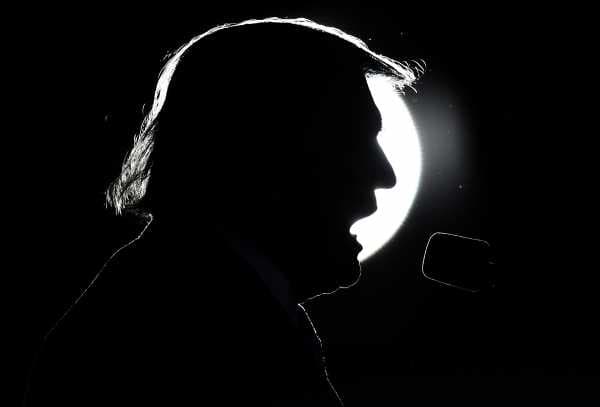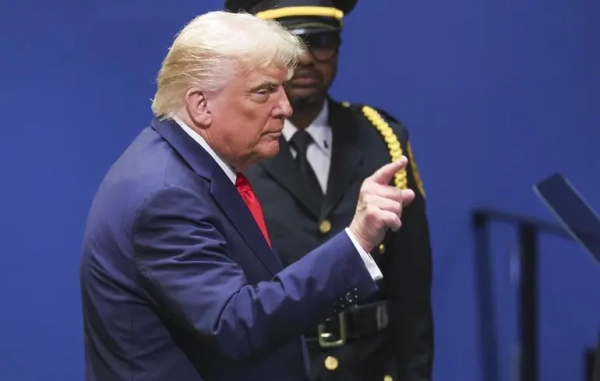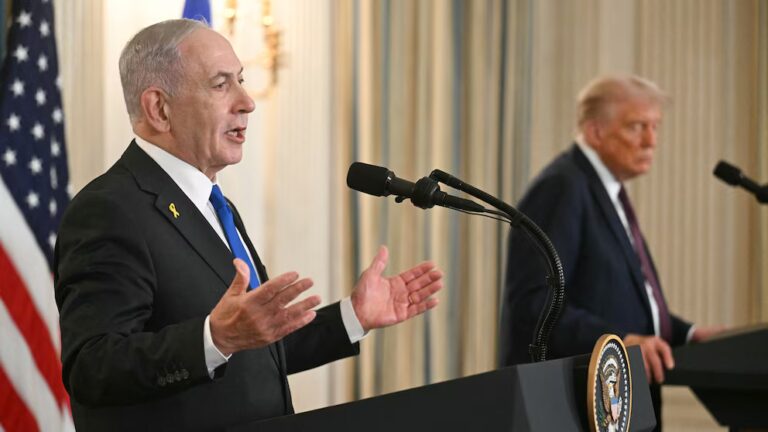
To much fanfare last year, President Donald Trump ordered his administration to declare a public health emergency over the opioid epidemic. “As Americans, we cannot allow this to continue,” Trump said at the time. “It is time to liberate our communities from this scourge of drug addiction.”
A new report from the Government Accountability Office (GAO) looked at the results of that emergency declaration. The report found little came out of the declaration.
According to the GAO audit obtained exclusively by Vox, the declaration enabled the Trump administration to make use of three new authorities — clearing paperwork requirements for a survey of health care providers about addiction treatment, allowing two states to move forward faster with programs to address the opioid crisis, and expediting support for research about opioid addiction and overdoses.
None of this is bad, but it’s certainly not groundbreaking — particularly for an overdose crisis that’s broken records for overdose deaths year over year, reaching an estimated 72,000 drug overdose deaths in 2017.
Sens. Patty Murray (D-WA) and Elizabeth Warren (D-MA), who along with other Democrats requested the GAO audit, criticized the Trump administration for what they see as inaction.
“Communities are desperately in need of more help to address the opioid epidemic. President Trump, as this report shows, has broken his promises to do his part,” Warren said in a statement. “I’ve asked this administration time and time again to show what actions they are taking to meaningfully address this crisis. No response. To me, it looks like empty words and broken promises. Hand-waving about faster paperwork and speeding up a few grants is not enough — the Trump Administration needs to do far more to stop the opioid epidemic.”
The White House did not respond to a request for comment prior to publication.
The Trump administration told the GAO that it is doing what it can with the emergency authorities unlocked by the declaration. The administration has also pointed to other steps it has taken in response to the opioid crisis. This year, for example, Congress, with Trump’s support, enacted more funding for addiction treatment as part of the federal budget.
But Trump’s emergency declaration is emblematic of the federal response to the opioid crisis so far: Despite a lot of promises and self-congratulating by the federal government on what it’s done, experts say that the White House and Congress need to go much further than they have so far — particularly when it comes to new dollars for addiction treatment.
Trump’s limited emergency declaration over the opioid crisis
The public health emergency declaration came upon the request of an opioid commission set up by Trump. As part of its preliminary report, the commission asked the administration to declare an emergency to remove regulatory barriers and unlock more resources to try to open up access to addiction treatment.
Trump followed through with the request in October 2017, with his typical flair.
But experts warned from the start that the impact of such a declaration would be fairly limited. They said it could mostly get some programs and research out faster. And it could unlock some funding — although, as the GAO noted, the Public Health Emergency Fund only has about $57,000 in it, and the Trump administration has not requested more funding for it.
As I wrote at the time, it was a limited move, but it would help jump-start some action in the opioid epidemic.
That seems to be what happened. A survey asking doctors about buprenorphine, a highly effective addiction treatment for opioid use disorder, got out faster — which will help shape federal policy regarding buprenorphine and addiction treatment in the future. Two states’ programs managed to skip some regulatory hurdles. Research was expedited.
But in total, the Trump administration has only used three of 17 authorities that the GAO found in connection to the emergency declaration. The Trump administration argued that many of these other authorities aren’t relevant to the opioid crisis; given that these kinds of authorities were traditionally formed to deal with more conventional public health crises (like, say, an Ebola or flu outbreak or natural disaster), they just aren’t fit to deal with a drug overdose epidemic.
For example, the declaration allowed the use of National Dislocated Worker Grants to “provide funding to create temporary employment opportunities to assist with clean-up and recovery efforts, among other things,” the GAO reported. But administration officials pointed out that “another grant option is available — the National Health Emergency Dislocated Worker Demonstration Grants — which was established to help communities address the economic and workforce-related impacts of the opioid crisis.” So the National Dislocated Worker Grants may be unnecessary, and, as a result, no eligible entities have applied for them.
There are some emergency authorities that Murray and Warren’s offices argue the Trump administration could be making a greater use of, such as in telemedicine. Advocates have pushed for relaxing rules around telemedicine so it can be done more easily for addiction treatment. But the Trump administration refused to use available emergency authorities to ease access to telemedicine, telling the GAO that “federal law provides for other circumstances under which these restrictions do not apply, thereby allowing the use of telemedicine” — as if the action taken so far by the administration on this issue was enough.
The reality, though, is a public health emergency declaration was never going to be enough to, as Trump suggested, “liberate our communities from this scourge of drug addiction.” It was always far too limited.
But this is a problem you consistently see with Trump and the opioid crisis. You could imagine a world where he declares an emergency, acknowledges the limits, and calls for specific further steps that could be taken — maybe some of the dozens of other proposals put forward by his opioid commission. Instead, we got a flashy press conference with bold but vague promises. It’s a Trump-y preference for presentation instead of substance.
The failings of the emergency declaration are representative of the federal response to the opioid crisis in general: well-intentioned, even good, ideas that are ultimately not enough.
The federal government needs to do more on the opioid crisis
It’s not that the Trump administration or Congress have done nothing in the face of the opioid epidemic. Beyond the public health emergency, the Trump administration has taken some regulatory steps — such as pulling back restrictions on Medicaid funding for addiction treatment — that will help expedite state policy responses.
Congress also recently passed and Trump is soon expected to sign the Support for Patients and Communities Act, which takes largely regulatory steps to expand access to addiction treatment and research regarding opioid addiction and pain. And Congress has allocated funding for the opioid crisis, including $500 million a year in the Cures Act (which has so far been renewed) and $3.3 billion in the fiscal year 2018 budget.
When I’ve asked experts about these approaches, it’s not that any of them are bad. It’s that they fall short. For instance, Leana Wen, the former health commissioner of Baltimore (and soon-to-be president of Planned Parenthood), said that the Support for Patients and Communities Act “is simply tinkering around the edges.”
The funding numbers are one such example. While Congress’s extra billion dollars here and there are good, experts estimate that potentially tens of billions more are needed each year. (For reference, a 2016 study put the total economic burden of prescription opioid overdose, misuse, and addiction at $78.5 billion in 2013.)
That much money is necessary in large part because the state of addiction treatment in America is abysmal. Federal data suggests that only one in 10 people with any substance use disorder and one in five people with an opioid use disorder seek specialty treatment.
Even when an addiction treatment clinic is available, fewer than half of facilities offer opioid addiction medications like methadone and buprenorphine — which are considered the gold standard of care — as an option. Treatment is inaccessible enough that most people who need it don’t get it, and even when treatment is available, it doesn’t meet the best standards of care.
So experts say something more systemic and encompassing, like Vermont’s hub and spoke system or Virginia’s Medicaid reforms, are needed in this area.
Trump, of course, could push for a bolder approach that attempts to get more resources and bigger reforms, or at least try to get his fellow Republicans to make a push in Congress.
But in talking to people involved with the legislation so far, they’ve told me that it’s Democrats who have consistently asked for more — including more significant funding for the crisis — and Republicans who have resisted, citing concerns about the role and size of government and general reluctance toward more spending.
To this end, Warren proposed the Care Act with Rep. Elijah Cummings (D-MD), which would increase federal spending to address the opioid crisis by $100 billion over 10 years. The bill, however, hasn’t budged in the Republican-controlled House or Senate.
As Keith Humphreys, a drug policy expert at Stanford who helped with the Support for Patients and Communities Act, told me, “This reflects a fundamental disagreement between the parties over whether the government should appropriate the large sums a massive response would require. Lacking that, Congress did the next best thing — which is to find agreement on as many second-tier issues as they could.”
The end result is similar to the emergency declaration: There are some genuinely positive steps, but in terms of addressing an overdose crisis killing tens of thousands of Americans each year, it’s simply not enough.
Sourse: vox.com






